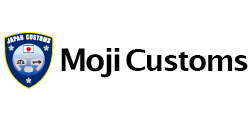About Moji Customs
INTRODUCTION
Foreign trade encourages economic growth. Japan has made remarkable progress in every field with the expansion of foreign trade.
Customs, as a frontline agency for foreign trade, has contributed to this progress by maintaining orderly trade practices and by preventing illicit trade which harms our society and impedes the economy.


History of Moji Customs
The history of Moji Customs dates back to 1889, when a Customs sub-branch office under the jurisdiction of Nagasaki Customs was placed in Moji Port. Moji Port was then designated as a special port for the export of coal, rice, wheat, flour and sulfur. Meanwhile, with the development of the port, the sub-branch office was upgraded to a Customs branch office and in November 1909, it was separated from Nagasaki Customs to become “Moji Customs”, the seventh regional Customs in Japan.
When World War Ⅱ became fierce, foreign trade stagnanted and Moji Customs was closed in 1943. It was re-opened in June 1946 as the regional Customs covering the entire area of Kyushu Island and Yamaguchi prefecture, which included the area which had been covered by Nagasaki Customs before the war. In 1953, Nagasaki Customs was onece again separated from Moji Customs to become a regional Customs. We work hard to protect the community and to contribute to the development of the region which is the gateway to the Asia Pacific Region
Moji Customs workes coopratively .
 |  |
1910 Jul. : The first generation building completed (1910 Dec. : burned down) | 1912 Mar. : The second generation building completed |
 |  |
| 1927 Sep. : The third generation building completed | 1979 May. : The present building completed |


